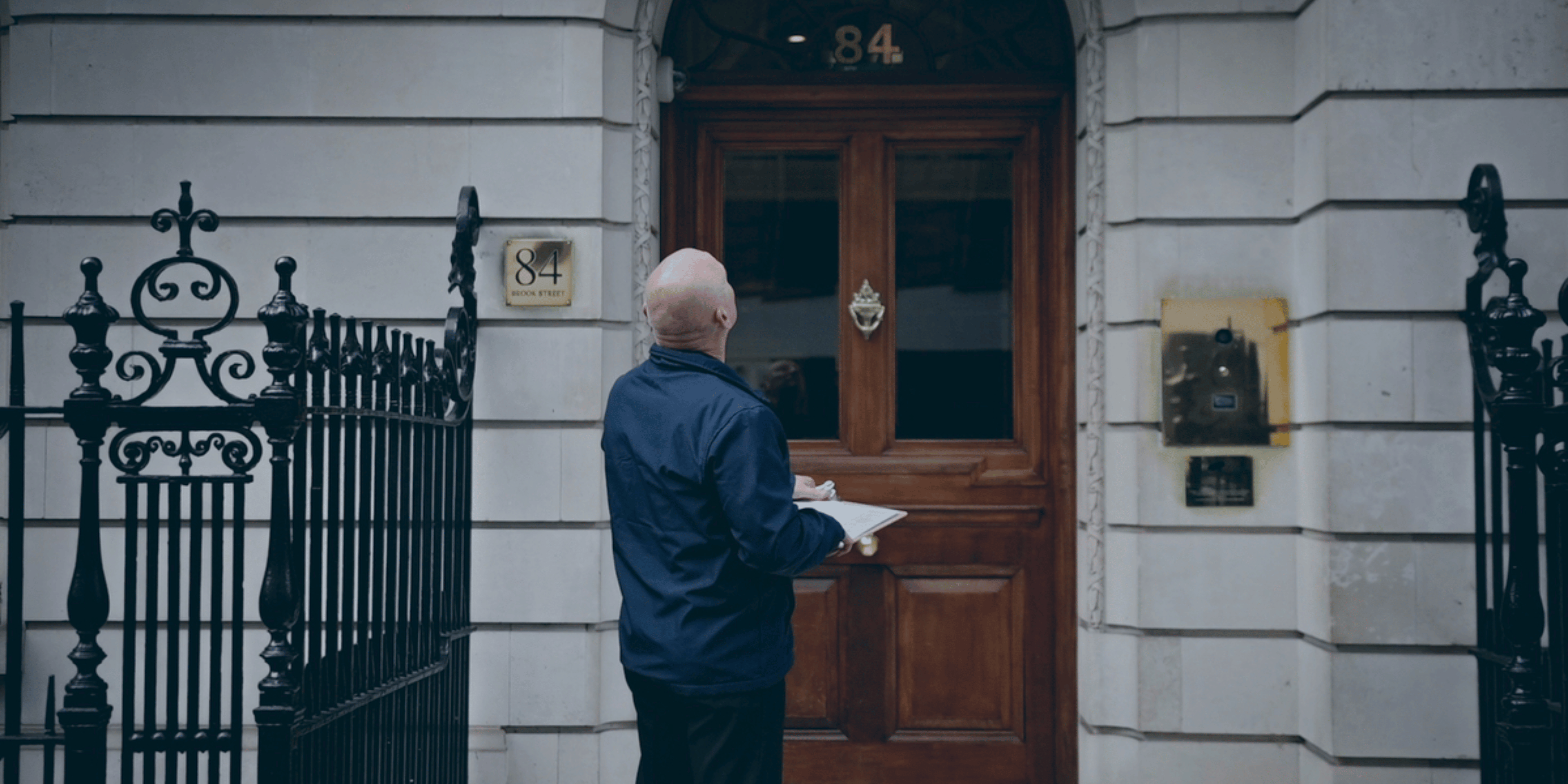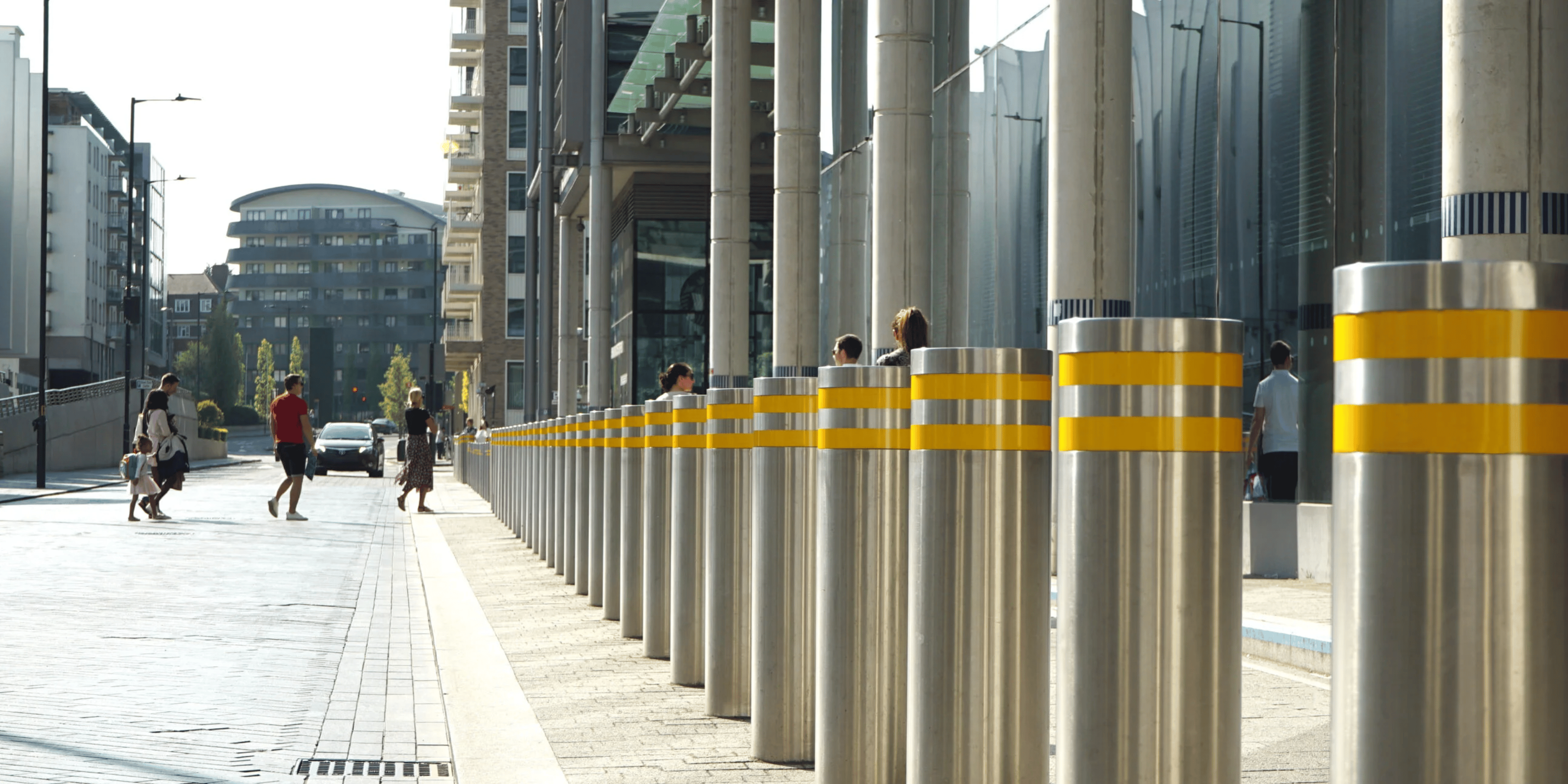
Understanding Retail Security: Key Components for Construction Sites
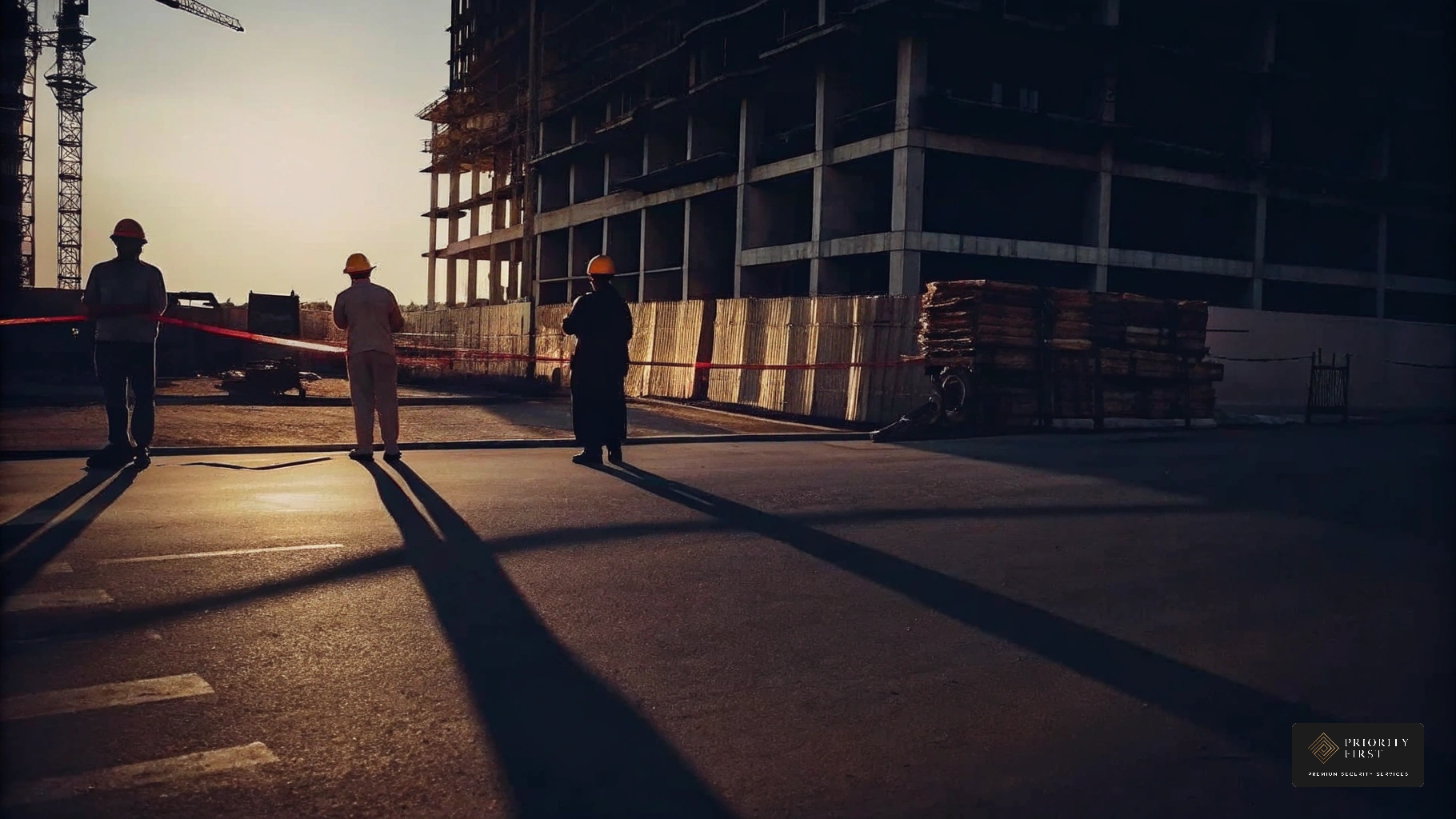
Overview
Retail security on construction sites is a critical factor for protecting valuable assets and ensuring the safety of workers. The reality is that effective measures, such as:
- Advanced surveillance systems
- Access control
- Trained personnel
are essential. Ignoring these strategies can lead to significant financial losses, operational disruptions, and reputational damage. The lesson is clear: implementing robust security not only deters theft and vandalism but also enhances the overall safety and efficiency of construction operations, addressing the unique challenges posed by the temporary nature of these environments.
In practise, investing in security measures is not merely an expense; it is a strategic move towards business continuity. Priority First offers pragmatic solutions that align with the need for resilience in the construction industry. By prioritising security, businesses can mitigate risks and safeguard their operations, ultimately leading to greater long-term value.
Introduction
Construction sites are often bustling hubs of activity, presenting unique security challenges that can jeopardise both assets and safety. With valuable materials and equipment at risk of theft and vandalism, understanding the intricacies of retail security becomes essential for project managers and stakeholders alike. The reality is that construction theft costs UK businesses over £1m a week. Ignoring these risks can lead to significant financial, operational, and reputational consequences.
In practise, it is crucial to implement effective retail security strategies tailored for construction environments. This article delves into key components of these strategies, exploring how advanced technologies and proactive measures can safeguard investments and ensure a secure working atmosphere. Priority First offers a pragmatic approach, focusing on long-term value rather than quick wins.
How can construction firms navigate the complexities of security in such dynamic settings while maintaining operational efficiency? The lesson is clear: early investment in security prevents greater losses later.
Defining Retail Security: An Overview
Store protection encompasses a variety of strategies and methods designed to safeguard businesses, their resources, staff, and clients from theft, vandalism, and other threats. This includes measures such as surveillance systems, access control, and comprehensive personnel training. In the context of construction sites, commercial protection is particularly essential, as these locations often serve as temporary shopping environments during the development of new commercial spaces.
The significance of commercial protection in construction cannot be overstated. Construction sites face numerous risks, including the theft of materials and equipment, which can severely affect project timelines and budgets. Effective retail security practices, including robust surveillance systems and well-trained personnel, are crucial for safeguarding valuable assets and ensuring the safety of workers on-site.
Incorporating smart CCTV surveillance with automated threat identification enhances safety by providing real-time notifications and insights into potential dangers. High-Volume Monitoring (HVM) further bolsters protection by tracking high-value items and overseeing extensive areas effectively. Additionally, access control measures can limit unauthorized entry, further securing construction assets.
Industry experts highlight the importance of these measures: "Your doors are your first line of defence, and they should offer protection from bullets and forced entry." This underscores the necessity of investing in to deter criminal activity.
Examples of effective commercial protection practices in temporary environments include the installation of bullet-resistant transaction windows and reinforced display cases, which protect high-value materials and equipment from smash-and-grab incidents. By prioritizing retail security, project managers can mitigate risks, protect their investments, and maintain a safe working environment. Moreover, integrating facilities management with protection solutions ensures a comprehensive approach to safeguarding construction sites, enhancing overall operational effectiveness.
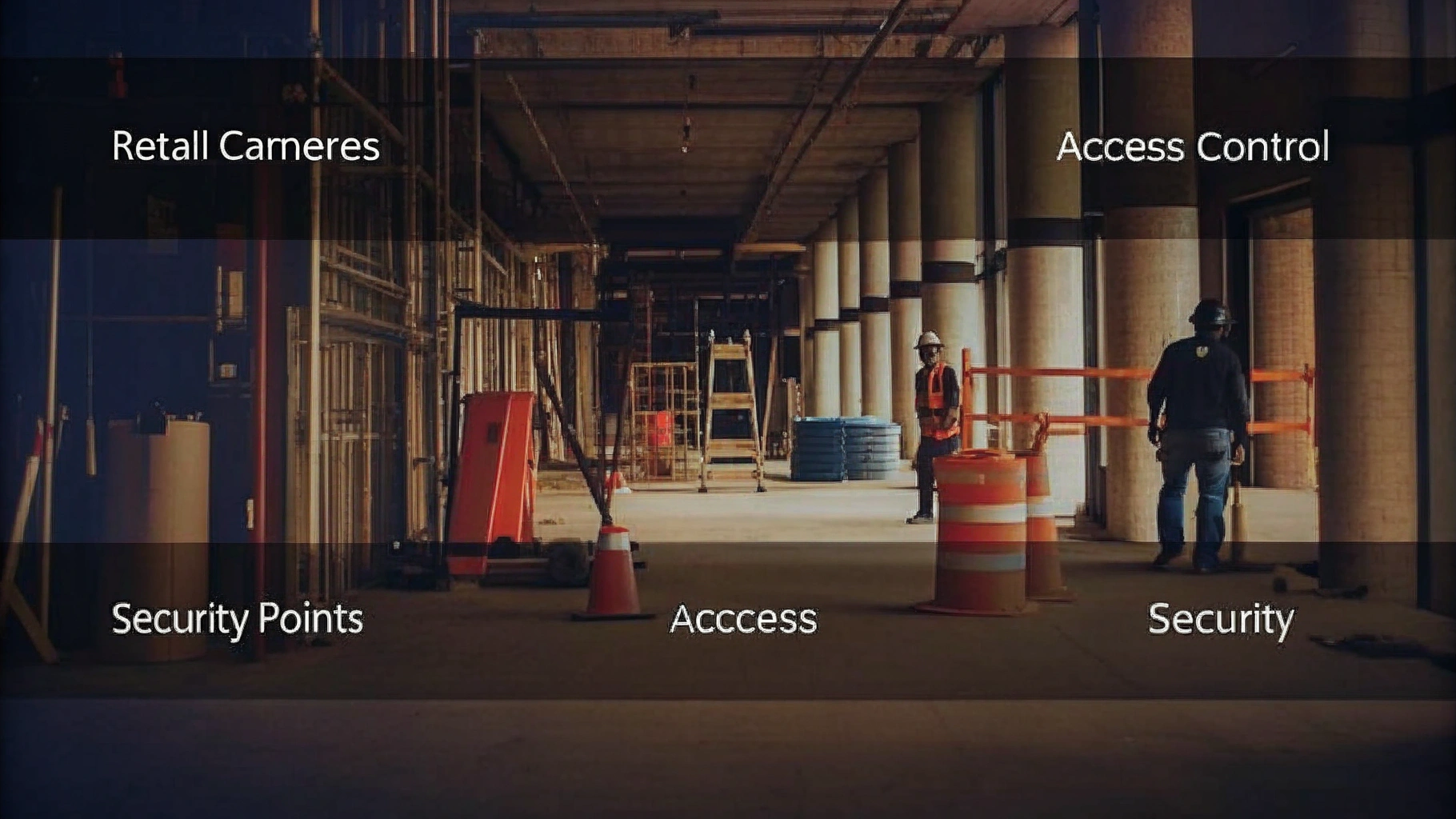
The Importance of Retail Security: Protecting Assets and Ensuring Safety
Retail protection is essential for safeguarding assets and ensuring the safety of individuals in construction environments. Building sites often house valuable machinery, tools, and materials, making them attractive targets for theft. Effective retail security measures not only deter criminal activity but also ensure a secure environment for workers and visitors. As Eric Underhill, a specialist in the safety sector, notes, 'The advantage of a guard is that they serve as both deterrent and solution to any safety concern a building project may encounter.'
By establishing robust safety protocols, such as a strict access control policy requiring ID badges, sign-ins, and electronic keycard access, construction firms can significantly reduce disruptions, maintain project timelines, and protect their investments. Priority First's comprehensive access control systems ensure that only authorised personnel can enter sensitive areas, thereby preventing the theft of essential materials and keeping projects on schedule. Additionally, a secure environment enhances the overall reputation of the project, instilling confidence in stakeholders and clients alike.
Moreover, integrating retail security practises into construction management can lead to improved safety outcomes. Security measures such as access control, surveillance systems, and on-site guards not only protect assets but also enhance retail security and contribute to a safer working environment. Mobile patrols can respond to alarms and monitor sites during vulnerable periods, further enhancing safety. This proactive approach to safeguarding, as exemplified by Priority First's commitment to , builds trust among employees and stakeholders, ultimately increasing project efficiency and success.
Furthermore, with a reported 45% increase in property offences across the UK, the need for effective protective measures on construction sites is critical. Regular assessments should be part of a comprehensive protection plan to identify vulnerabilities in site safety measures, ensuring that protocols remain effective and adaptable to evolving threats. By prioritising logistics management alongside safety measures, construction firms can ensure smooth operations and minimise delays, thereby safeguarding their investments.
Key Components of Retail Security: Technologies and Strategies
Key elements of retail security encompass advanced surveillance systems, access control measures, and trained personnel. Technologies such as CCTV cameras, alarm systems, and motion detectors are pivotal for retail security, as they help in monitoring activities and deterring potential threats. In construction sites, these technologies can be adapted to monitor perimeters, control access points, and ensure that only authorised personnel are allowed on-site.
The reality is that Priority First’s CCTV monitoring service, accessible around the clock, is essential for retail security, serving as both a deterrent and a means for real-time threat detection, enabling operatives to react promptly to any unusual or unauthorised incidents.
Furthermore, employing guards is an essential aspect of retail security that can provide a noticeable deterrent against theft and vandalism while also enhancing customer service and safety.
Priority First specialises in integrating these components into a cohesive retail security strategy, ensuring minimal disruption during implementation while enhancing your current protective setup. This integration is crucial for retail security by , safeguarding assets, and ensuring that operations run smoothly.
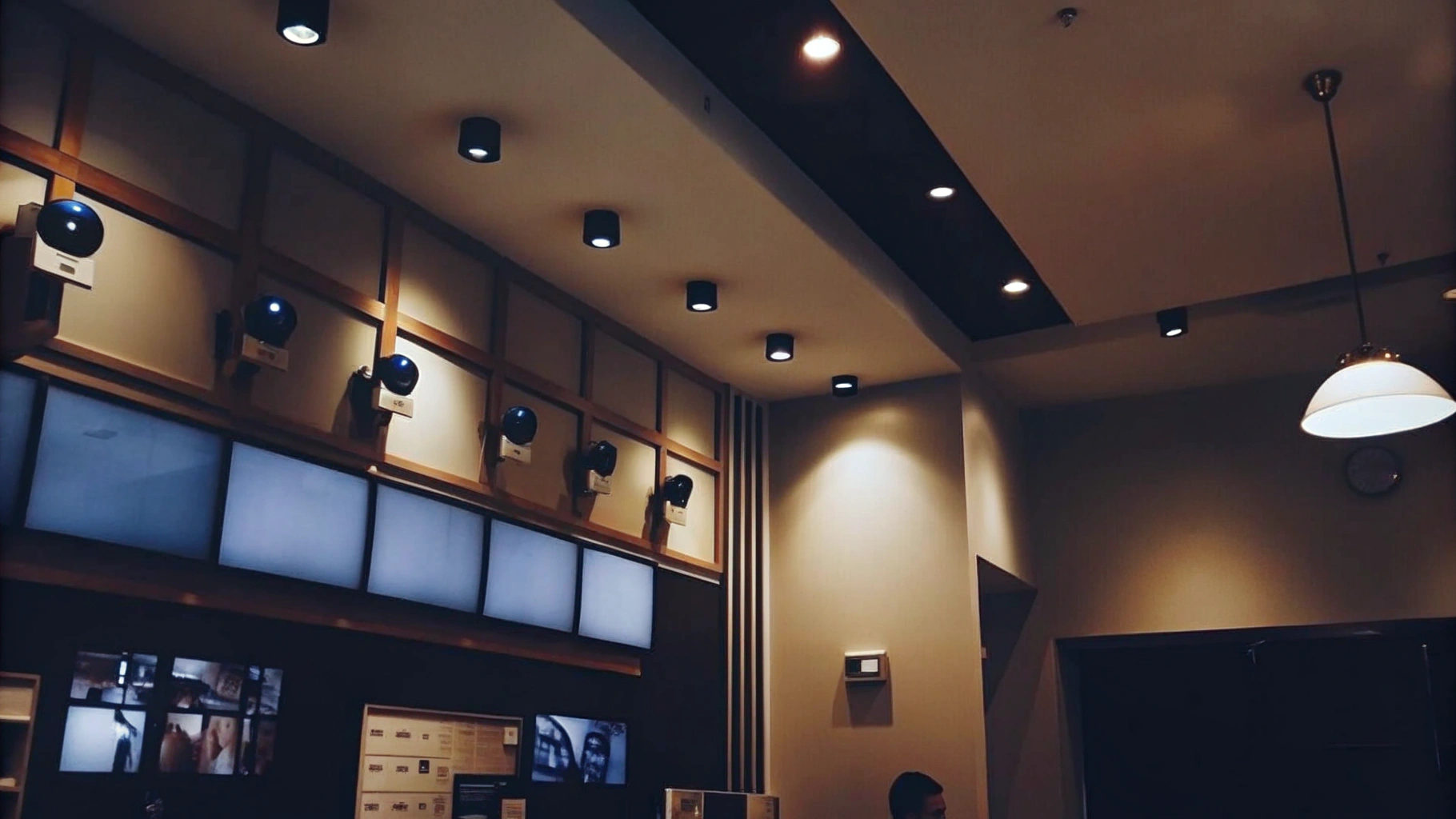
Challenges in Implementing Retail Security on Construction Sites
Establishing retail protective measures at building sites involves navigating several challenges, particularly due to the temporary nature of construction tasks and the fluidity of site arrangements. High turnover rates among personnel can impede the establishment of consistent safety practices; studies indicate that turnover in building protection roles can exceed 30% annually. This inconsistency creates vulnerabilities that impact retail security, including unauthorized access and theft of valuable materials, which have surged by 67% across the UK building sector in recent years. As Henry Badoo points out, "Selecting the appropriate protection provider is essential; this guarantees your platform is well-guarded and your assets are secure."
To address these challenges effectively, construction firms must adopt a that incorporates retail security, leveraging tailored management and consulting services from Priority First. This includes the implementation of advanced technology, such as mobile surveillance units and real-time monitoring systems, which can adapt to evolving site conditions. Specific services offered by Priority First, including threat evaluations and policy development, are vital for creating a comprehensive safety plan. Regular training sessions for personnel are critical to ensure they are well-acquainted with the latest protocols and technologies. Furthermore, transparent communication of protective measures and expectations can significantly mitigate risks, fostering a safe environment that protects both personnel and assets. Addressing safety challenges in construction necessitates a commitment to adaptability and innovation, similar to the principles of retail security in protective practices.
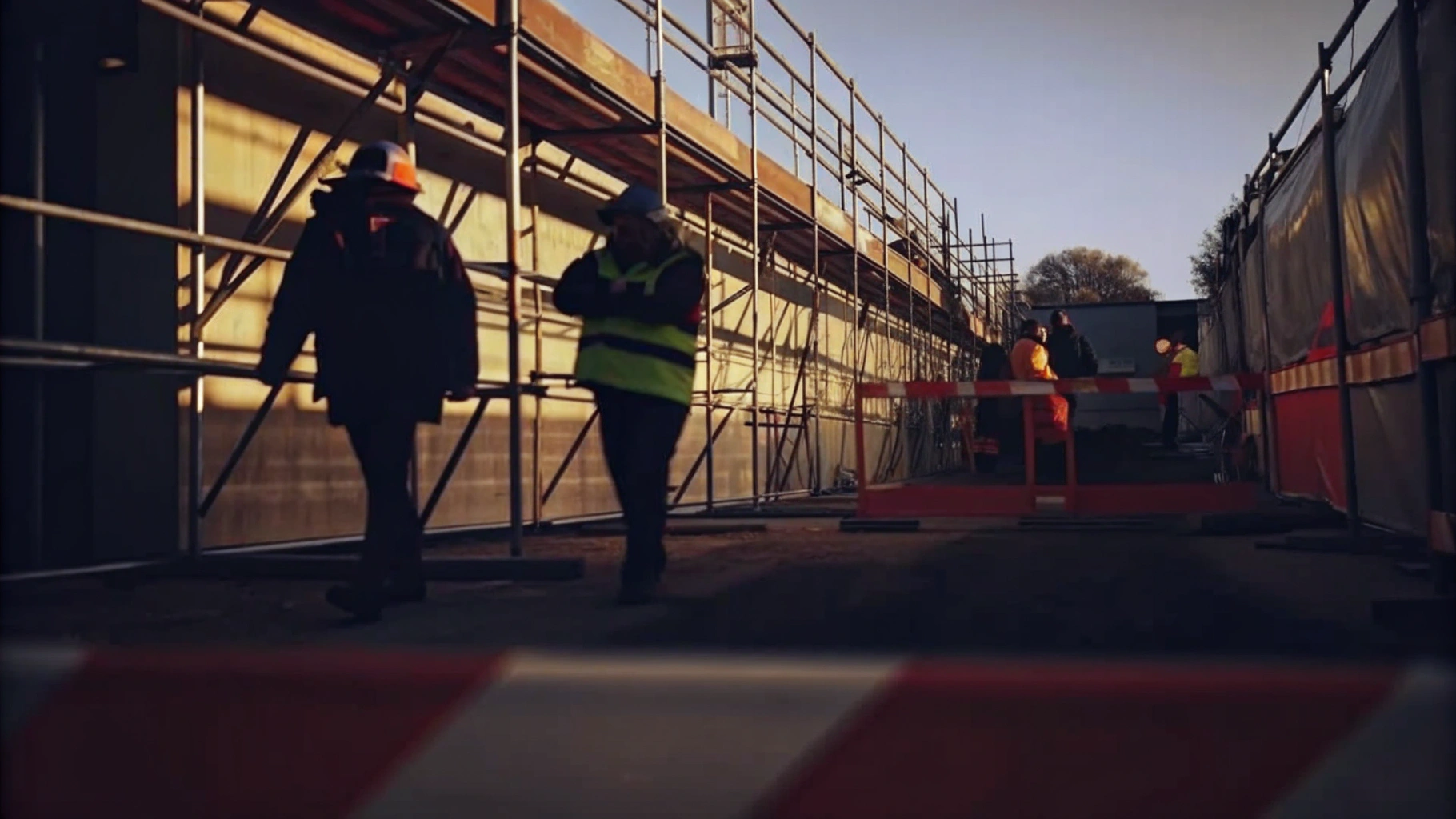
Future Trends in Retail Security for Construction Sites
The future of retail security on construction sites is set for significant advancements, driven by technology. The integration of AI-powered surveillance systems is set to revolutionise threat detection and response capabilities, enabling real-time monitoring and analysis. These systems utilise advanced algorithms to identify unusual activities, thereby enhancing safety. For example, Priority First's comprehensive CCTV monitoring service offers around-the-clock surveillance, serving both as a deterrent and a tool for real-time threat detection, ensuring that any suspicious activity is swiftly addressed.
Predictive analytics will further bolster protective measures by anticipating potential risks before they escalate. By analysing historical data alongside current conditions, building firms can proactively address vulnerabilities, fostering a safer environment. Additionally, the deployment of drones for aerial monitoring provides a comprehensive view of construction sites, facilitating the detection of potential threats from otherwise inaccessible locations and delivering immediate alerts to safety personnel.
This empowers project managers to make informed decisions regarding resource allocation and safety strategies. As Andrew Kang, an industry advisor, notes, "The incorporation of artificial intelligence into existing protective frameworks signifies a paradigm shift in how building risks are actively identified and managed." By leveraging these innovative technologies, including the integration of AI with access control systems and Priority First's tailored retail security solutions, construction sites can maintain robust security while adapting to the evolving landscape of threats.

Conclusion
The discussion surrounding retail security on construction sites underscores a critical reality: effective protective measures are essential not only for safeguarding valuable assets but also for ensuring personnel safety. The costs associated with theft, vandalism, and unauthorised access can significantly disrupt construction projects. Therefore, robust retail security strategies are not merely advisable; they are imperative for operational continuity.
Key components of an effective security framework include:
- Advanced surveillance technologies
- Stringent access control systems
- Well-trained personnel
These elements work together to create a secure environment that deters criminal activity while promoting safety for workers and visitors alike. The integration of innovative solutions, such as AI-powered monitoring and predictive analytics, enhances the capacity to identify and respond to threats proactively.
In light of the rising property offences and the unique challenges posed by the transient nature of construction sites, prioritising retail security is a necessity rather than a recommendation. By implementing comprehensive security measures and fostering a culture of safety, construction firms can protect their investments and ensure the successful completion of projects. This proactive approach not only safeguards physical assets but also builds trust with stakeholders, reinforcing the importance of a secure working environment in the construction industry.
Frequently Asked Questions
What is the purpose of retail security in construction environments?
Retail security in construction environments is designed to safeguard assets, protect staff and clients, and prevent theft and vandalism. It encompasses various strategies, including surveillance systems, access control, and personnel training.
Why is commercial protection particularly important at construction sites?
Construction sites are vulnerable to risks such as theft of materials and equipment, which can impact project timelines and budgets. Effective retail security practises help protect valuable assets and ensure the safety of workers on-site.
What are some key components of effective retail security?
Key components include robust surveillance systems, well-trained personnel, access control measures, and automated threat identification systems. These elements work together to enhance safety and deter criminal activity.
How does smart CCTV surveillance contribute to retail security?
Smart CCTV surveillance with automated threat identification provides real-time notifications and insights into potential dangers, enhancing safety and allowing for timely responses to threats.
What are High-Volume Monitoring (HVM) systems?
High-Volume Monitoring (HVM) systems track high-value items and oversee extensive areas effectively, bolstering protection in construction environments.
What physical security measures can be implemented in temporary construction settings?
Effective measures include installing bullet-resistant transaction windows and reinforced display cases to protect high-value materials and equipment from smash-and-grab incidents.
How can access control systems improve security on construction sites?
Access control systems can limit unauthorised entry by requiring ID badges, sign-ins, and electronic keycard access, thereby preventing theft and ensuring only authorised personnel access sensitive areas.
What role do on-site guards play in enhancing retail security?
On-site guards serve as both a deterrent to criminal activity and a solution to safety concerns, contributing to a secure environment for construction projects.
Why is it important to regularly assess protection measures on construction sites?
Regular assessments help identify vulnerabilities in site safety measures, ensuring that protocols remain effective and adaptable to evolving threats.
What impact does integrating retail security practises into construction management have?
Integrating retail security practises improves safety outcomes, protects assets, enhances the reputation of the project, and builds trust among employees and stakeholders, ultimately increasing project efficiency and success.


